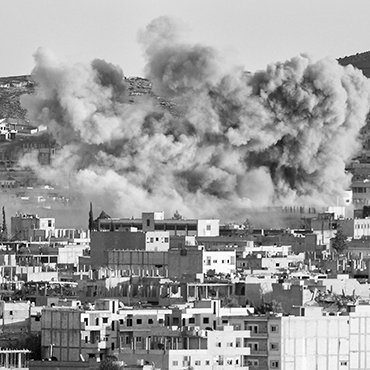IN INDIA, MELDING RELIGION AND VOCATION
India has launched its first-ever postgraduate diploma course in Applied Islamics at one of the country's leading universities. The one-year course, to be hosted by Yenipoya University in Mangalore, will offer students "Islamic knowledge integrated with knowledge of English, computer sciences, and current affairs," and will be open to all graduates of the University as well as two other institutions. The Applied Islamics course is the brainchild of the University's Chair in Islamic Studies and Research, Dr. Javed Jamil, who sees the class as the starting point for what he hopes to ultimately be an International Centre for Applied Islamics. "Students will examine the key teachings of Islam as a religion and a civilization that has come in contact with other cultures and civilizations," Jamil has said. "They will also explore other areas such as Islamic economics, Islamic law, Islam and health, Islamic social system, women and Islam, Islamic core sources and Islamic ethics." (Riyadh Al Arabiya, August 10, 2018)
STORIES FROM DARZAB
Growing clashes between the Taliban and Islamic State in Afghanistan has sparked a mass exodus of locals from areas affected by the fighting. The town of Darzab, in the country's northern Jawzjan province, has emerged as a bellwether of sorts for this contest. For over a year, the town served as a militant stronghold, until a recent offensive by Taliban and Afghan security forces killed over 200 IS fighters, effectively liberating the area. Many Darzab residents fled to nearby villages, where they have begun to recount stories of forced marriages and rape committed by the militants, as well as instances of forcible conscription of child fighters.
The stories from Darzab have also provided a clearer picture of the shape of the Islamic State in Afghanistan. Unlike in Syria and Iraq, the IS affiliate in Afghanistan is reportedly "not a monolithic group nor a direct extension of the extremist group," but is better understood as an "alliance of splinter groups." Such splinter groups include the Afghan and Pakistani Taliban, as well as the Islamic Movement of Uzbekistan and Lashkar-e-Jhangvi. And despite extensive U.S. and allied efforts, local residents claim the militants still maintain significant control in the region surrounding Darzab. (Radio Free Europe/Radio Liberty, August 13, 2018)
THE TALIBAN REVERTS TO TYPE...
Is Afghanistan’s militant Taliban movement a potential partner for peace? The question, once answered authoritatively in the negative, has resurfaced anew amid growing tactical cooperation between it and the Afghan government in the fight against the Islamic State - a development that has raised hopes of reviving the long-stalled political dialogue between the Taliban and the U.S.-supported government in Kabul. But, as the Taliban has now made clear, the current coordination flls far short of a substantive chance of ideological orientation on the part of Afghanistan's Islamist radicals. On the eve of Eid al-Adha, Taliban leader Maulvi Haibatullah Akhunzadah issued a statement declaring that "there will be no peace in Afghanistan as long as the foreign occupation continues." The message reiterates the group's nearly 17-year position on the presence of U.S. and allied forces in the region. The Taliban, moreover, are maintaining the fight against a foreign presence in the country; several weeks prior to the Muslim holiday it launched a major military assault in Ghazni, 120 miles from Kabul, precipitating five days of airstrikes from the United States. (Associated Press, August 18, 2018)
...AS BEIJING WADES INTO THE AFGHAN FRAY
Beijing, meanwhile, is stepping up its security assistance to the Afghan government. In late August, the Afghan embassy in China announced that Beijing is establishing a "mountain brigade" in northern Afghanistan to assist in carrying out "counterterrorism efforts" near the border. The assistance, however, stops short of actual troop deployments; Afghan officials have stressed that "there will be no Chinese military personnel of any kind on Afghan soil at any time." Nevertheless, the development is significant, in that it signals growing involvement - and investment - by the PRC in Afghan stability. It follows Beijing's provision of over $70 million in military aid to the country, as well as growing trade and economic contacts between Beijing and Kabul as part of the Chinese government's much-vaunted "Belt and Road Initiative." (South China Morning Post, August 29, 2018)
[EDITORS' NOTE: For China, stepped-up security assistance to Afghanistan is logical, given the territorial proximity of Afghanistan to China's western (and restive) region of Xinjiang. Beijing remains concerned about contacts between the Taliban and Islamic separatist groups in Xinjiang, something that China's growing counterterrorism investments in Afghanistan are intended to address. Additionally, the success of the "Belt and Road" depends heavily on greater stability in South and Southwest Asia, which has catapulted the PRC into a more proactive stance on regional security issues.]
Want these sent to your inbox?
Subscribe

